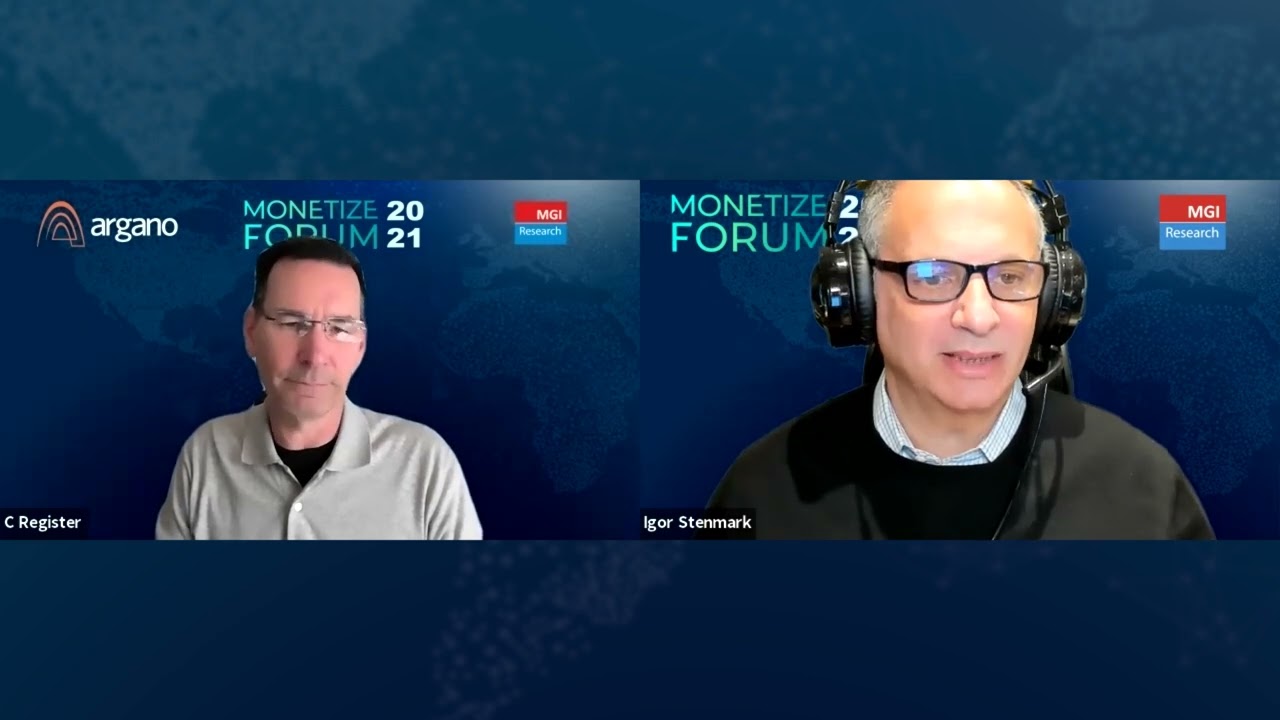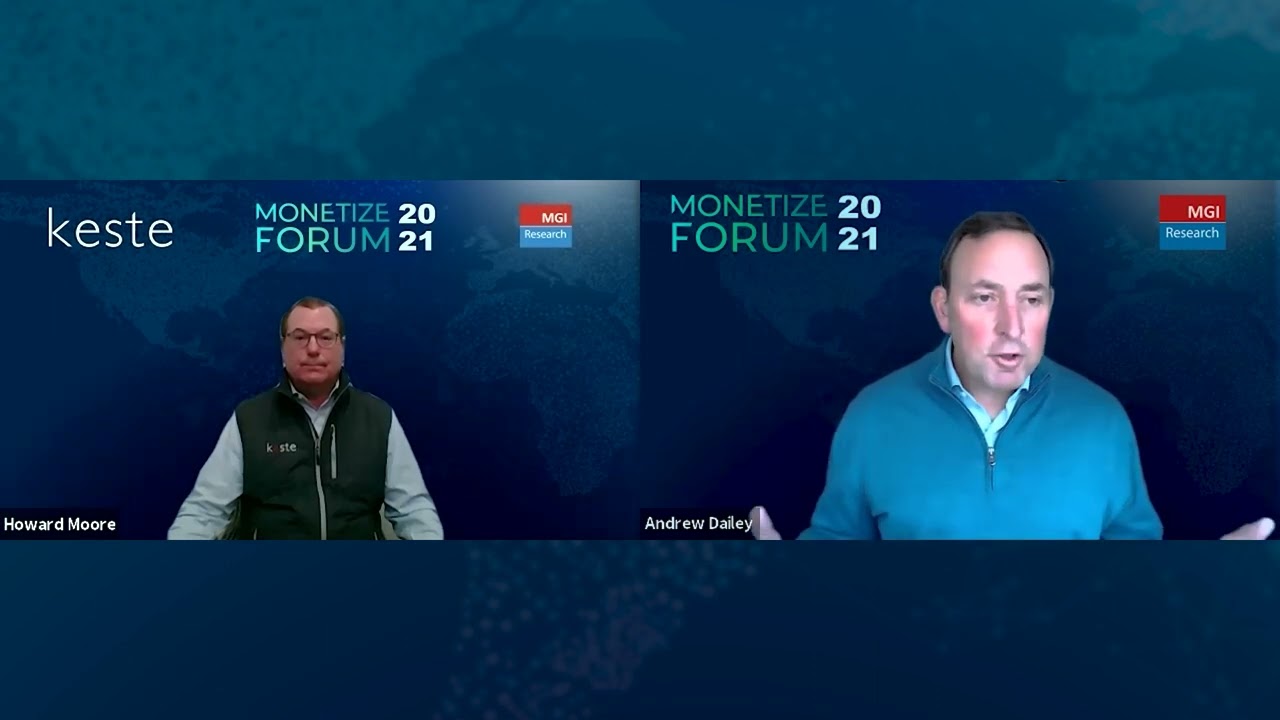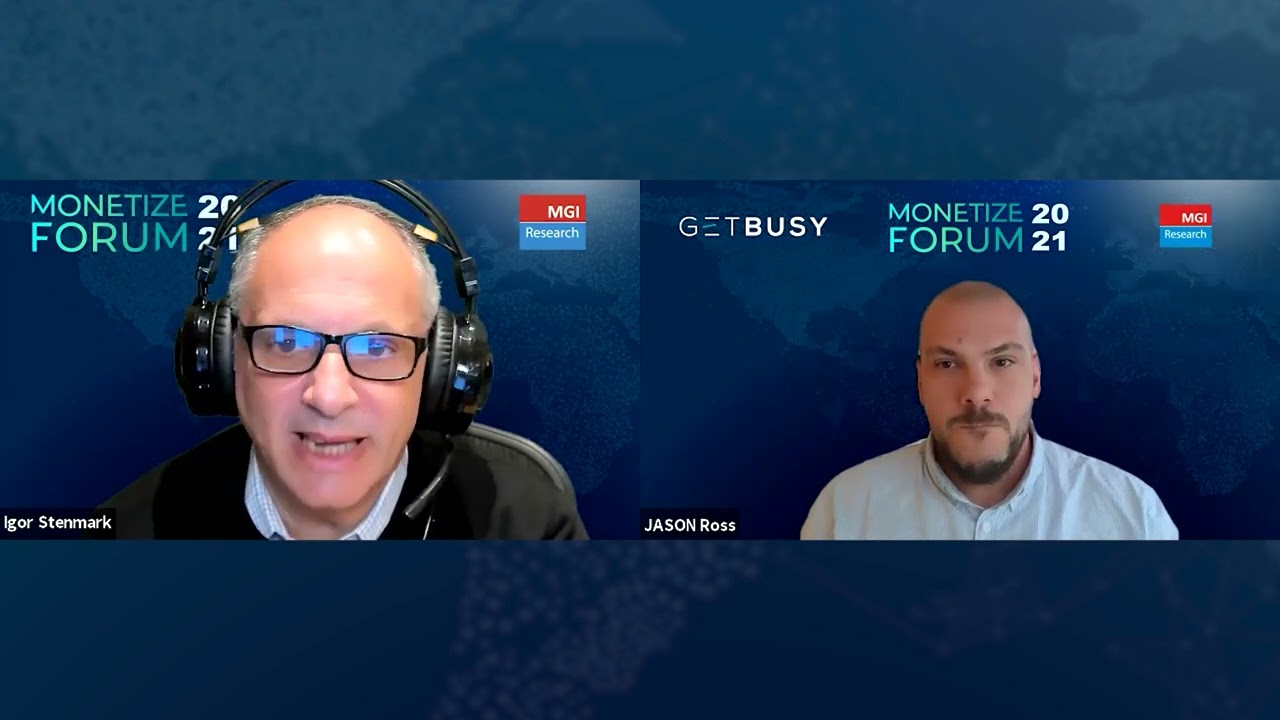
The introduction of ASC 606 brought new rules for determining fair value and making allocations, a particular challenge for businesses looking to scale. We invited Jugnu Bhatia, Chief Accounting Officer for Zscaler (which was an unusually early adopter of the standard) to speak about his experience meeting this issue at the 2021 Monetize Forum. In his conversation with MGI Research analyst Andrew Dailey, Jugnu explains why Zscaler requested to adopt ASC 606 early while preparing for their IPO. He also discusses how it drove the company to focus on automating their revenue recognition and why, after a nine-month POC, they chose to go with a solution from automated revenue management platform Ayara.
Key Issues
How do new rules on fair value determination relate to the need for rev rec automation?
How can companies balance complex sales flexibility with financial control?
What is business linearity?
Guest Profile
Jugnu is the Chief Accounting Officer at Zscaler. He joined the company in 2015 and led the finance operations team in execution of its initial public offering while scaling the finance operations to support exponential revenue growth. He previously worked for Marin Software as VP, Corporate Controller and at Oracle, where he served as Senior Director of Finance and Director of External Reporting. Before Oracle, Jugnu worked at PricewaterhouseCoopers LLP.
Andrew Dailey
Welcome everyone. I’m Andrew Dailey of MGI Research, and this session is “Revenue Intelligence: A CAO’s Journey.” For many organizations, the adoption of the new revenue standards was a primary driver for investing in rev rec tools, and the effort was focused only on adherence to the standard. However, for a select few, the adoption of ASC 606 was just the beginning of a very focused effort to give finance and the business greater revenue intelligence and the ability to make critical decisions affecting quarterly revenue results while in the quarter.
To share the experience of one chief accounting officer who managed a successful IPO while in the process of flipping revenue accounting from a retrospective task to a proactive business enabler, I’m delighted to be joined by Jugnu Bhatia, the Chief Accounting Officer of Zscaler. Jugnu welcome to the Monetize Forum.
Jugnu Bhatia
Andrew, thank you for having me. I’m really excited to join you.
Andrew Dailey
To start, give us a sense of Zscaler as a company.
Jugnu Bhatia
Zscaler is well known to the marketplace as the largest security cloud in the world. We operate ZTNA network, which is the Zero Trust exchange for the best-of-the-best enterprises in the world, encompassing secure web gateway, cloud firewall, digital exchange, software-based VPN—you name it. So yes, I’m very excited to be here.
Andrew Dailey
When you joined, what was your mandate coming into the company?
Jugnu Bhatia
When I joined the company, it was really small, close to $80 million in revenue. Today we are in the $600 million-plus revenue range. The main mandate was twofold. In the name Zscaler is scalability, the zenith of scalability. Our twofold mandate was to scale the revenue operations of the company, making sure that we could capture the market rapidly as customers move to the cloud journey, and to prepare the company to go public.
Andrew Dailey
Perfect. When you came in as part of that IPO process, you formally placed a request with FASB and your auditors for Zscaler to be a very, very early adopter of ASC 606. Why? Give us the exact timing and why you did that.
Jugnu Bhatia
Yes. We actually went to the SEC as part of our IPO process sometime in the early part of 2017 as we were starting to prepare for our IPO (for timing purposes, we went public in March of 2018). At that time, 606 was not applicable to us yet as a private company; we could only adopt it starting in August of 2017. However, we wanted to get started and present our financials in the next generation accounting standard.
So, we went to the SEC and said, “We don’t want to confuse our investors between the pre-606 filing and a post-606 filing, so we’ll become the guinea pig as early, early, early adopters. Please permit us to early adopt even though it is not applicable to us. We envision ourselves to be a public company down the road, and we want to play by the same rules as the larger public companies.” So, we early adopted, and if you go into the public domain, you will not see any financials from Zscaler that are on a non-606 basis before a transition. We just maintained 606 all along.
Andrew Dailey
As part of 606, there’s this issue of determining fair value and then making proper allocations. The challenge for everyone and, as you mentioned, your focus when you came in was really about how to put the systems and processes in place to scale. How did you begin to think about automating the rev rec process?
Jugnu Bhatia
As you rightly pointed out, the fair value determination rules changed. Early on, as we were taking the journey of becoming a public company, spreadsheets were obviously the best partner for us (as they were for everybody else). So, for almost a year and a half, we were using massive spreadsheets to prove to our auditors the fair value allocation, the auditability of that, the internal controls around it, and so on and so forth. But we always believed that there would be a good solution; we were just still in the discovery phase in terms of how to actually automate that effort.
We started engaging an early-stage company called Ayara. They were already engaged with some of our co-founders early on in a different setting, and we started engaging with them to understand the thought they had of automating this effort. We said, “If you can prove to us that you can come close to or almost accurately perform the same allocation we’re going through for our audit purpose in this tool, we’re all game.” Zscaler’s culture is to go after newer technologies, and we ourselves are a pioneer in the technology space. So, we went with them for an almost nine-month POC and recently have signed up to make sure we can use the SSP analyzer to automate our efforts with respect to the fair value allocation.
Andrew Dailey
I just want to reinforce that Zscaler is one of those rare companies known for being both innovative from a product point of view and also very innovative internally in terms of your operations and processes. Going back to what you just mentioned, you guys went through a very intense, nine-month POC putting this SSP analyzer through its paces. Can you describe the SSP analyzer from Ayara? What does it do? What were you looking for, and what are you getting from it today?
Jugnu Bhatia
Absolutely. You pointed out exactly what we went through, and it was primarily because we wanted to tie it to our quarterly reporting. If you think about it, nine months was well thought out because we wanted to make sure we started immediately after our new year, ran it for the quarterly reportings, and had it in place before we got to our next year. We wanted to make sure it went through the same rigor that we go through in the audit process for those three quarterly reportings, so we ran parallel processes: our data using our existing process, and our data run again in the Ayara tool to make sure the outcomes are absolutely the same. There were early differentiations of the methodology; we refined some, and they refined some. That’s how we went through and made sure that the POC was successful before we signed up. Generally, SaaS vendors have a position of selling, and you often buy without a lot of POC. Zscaler itself sells POC-based to a lot of our customers because we want them to be successful. We used the same methodology in how we partnered with Ayara to make sure we’re successful when we are out the door.
On the SSP analyzer itself—we sell a lot of bundles; we sell a lot of SKUs (which most of the successful software companies will be doing), which include implementation services, premium support, and other types of services that we provide. Our customers can ramp with us over a certain period of time. We also sometimes provide them future benefits with respect to adding more features to their offering. So, all these issues eventually need to be captured in terms of the fair value allocation. That is where the complexity was when we were running it through the spreadsheet models, and that was the biggest solution that we were getting. That’s why we embarked on this journey to make sure that we can get there, tested and implemented.
Andrew Dailey
In those complicated ramp deals, it gets very difficult, not just from the initial booking but as the customer scales up their usage and consumption of everything that you’re offering—professional services, product, et cetera. You then have to go back and make all those changes in the allocation tables. How well have you been able to automate that continuous change that takes place in those complex, multi-year deals?
Jugnu Bhatia
The main win from the Ayara tool was that it has out-of-the-box NetSuite integration, so as we’re completing our order bookings, if customers move on and then come back and buy more, the tool has already identified the original deal. It’s tying the next deal alongside the original deal, creating a continuous update process because the tools are talking to each other, and as we’re completing the order booking process in NetSuite, it’s getting reported into Ayara. So, that’s something that we were very big on because we don’t want to write customizations ourselves. We want to stay away from that. We run a very lean operation, so that was one of the benefits we got.
Andrew Dailey
One level of “finance nirvana,” if that can be described, is a way to synchronize what’s happening between finance and sales operations. You’re describing selling complex deals. How do you give your sales execs the agency to sell those complex, customized deals while, from a finance perspective, maintaining the control and visibility that you need to have when you go to sign the audited financials and report to the SEC? From a systems and process point of view, how do you get that synchronization to provide that flexibility and control at the same time?
Jugnu Bhatia
That’s a great question. It’s kind of the biggest challenge if you speak to any CRO and CFO separately. When they come together, they’ll say, “Yeah, we are great partners,” but if you bring them in separately, the CRO will say, “You know what? I always put out a deal, and they reject it.” Then the CFO will say, “I always get a deal that’s a money loser.” So, that’s definitely one area. We believe that as companies are selling solutions that are focused to customers, the structures of the deal should be structured to the customer and not to the iron fist of finance.
Early on, we used human intelligence because there weren’t many tools that catered more towards revenue intelligence in an automated fashion. Now, though, we have started looking through the processes to see how we can bring revenue intelligence back to the quoting stage. If you are selecting certain BOMs, what are you trying to build for the customer to serve the customer in the right way? Does it make sense for us? Discounting was always the case to control, but that was only the portion of discounting that would be done with respect to whether I want to sell or not. What will it do to revenue gross margin and those things—especially on a revenue attribute basis in a SaaS model that we care about and had been handling on a manual, deal-by-deal basis? If you wish to scale, that cannot be the case. You need to provide intelligence right there when the sales rep is building the BOM, and that’s something we are really excited about. We are exploring more and have a part we want to put together where Ayara’s revenue intelligence is going to talk to CPQ (which is also their out-of-the-box functionality) to provide intelligence right at the doorstep for the sales organization.
Andrew Dailey
Very specifically from a finance point of view, what does having a view into the quoting process as quotes and BOMs are being added give you in terms of control over quarterly results or how you incentivize account execs? What does that really give you in terms of fine-grain controls?
Jugnu Bhatia
That’s one of the most closely monitored processes in any company: How are you tracking revenue forecasting for that quarter? That’s the biggest question for any CFO during the quarter—it’s guidance, compare forecast, board plan. How are you putting it all together—especially for the deals that are happening right in the middle of the quarter? In SaaS, you have a base and run with the base, but then you do add newer deals during the quarter, especially sometimes in the middle of the quarter. You want to make sure that is the case you are capturing, so we are using this intelligence in our thought process to make sure we can provide at-the-point intelligence of our forecast that can help our CFO ensure the estimates they’re making using spreadsheets today are actually formed more on a deal-by-deal assessment basis. That is the value proposition that we will get from this.
Andrew Dailey
Presumably, that also then feeds into budgeting and planning because you can actually see what the cash picture is going to look like over time—almost in real time.
Jugnu Bhatia
On that cash picture, I would say that would be our next stage—scenario planning. If I were to distribute linearity across the 12 months and could execute the deals of linearity with sales in terms of when these deals will land, we could more accurately predict what the next year’s revenue (or the revenue from the year after that) would look like, which would be feeding into our budget planning more.
Andrew Dailey
Yes. So, you have this term and concept that you guys have embraced internally of “business linearity.” Describe that a little bit. What does that mean, and how do you put that into action?
Jugnu Bhatia
Absolutely. In the old school, you get the software deal, you deliver the keys, you recognize the revenue, and you move on. In SaaS, the value is linearity. The sooner you get the deal in the quarter, the more revenue you have for the quarter. So, linearity is extremely important. It provides us the health of our business. We can see how the pipeline is converting into business and how soon it’s converting. As much as we love it, though, that linearity poses a challenge to see how much revenue it will impact for the current quarter and in the coming quarters. That’s where revenue intelligence is important to us to make sure we can understand the linearity, convert it into revenue when the coding process is taking place—not afterwards, once it is booked in NetSuite—and also make sure that it properly flows into our forecast for the current quarter.
Andrew Dailey
Terrific. Well, Jugnu, this has been really enlightening—very insightful. You guys are doing some really exciting work, and I want to thank you for your time today. I think your details are available in the networking section if people want to reach out. Thanks everyone, for joining us, and this concludes our session.
Jugnu Bhatia
Thank you, Andrew. I really wish you good luck for the session and the rest of the event.
Andrew Dailey
Thanks.




